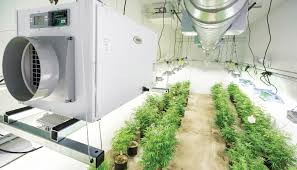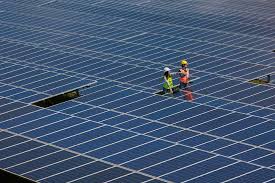In the rapidly growing cannabis industry, maintaining optimal conditions for the environment is essential to production quality and health of the plants. One of the most important elements of this environment is the HVAC (Heating, Ventilation, and Conditioning) system. Conditioning) system. Proper HVAC design in the cannabis cultivation facility will ensure that plants receive the right amount of sunlight and temperature, as well as humidity as well as air flow. Here’s a comprehensive guide to understanding the basics to cannabis HVAC design.
1. Temperature Control
Cannabis plants thrive within specific temperature ranges, usually between 65degF and 80degF (18degC between 27 and 28degC). Variations in temperature can cause stress to plants and impact yields. During the vegetative stage, mildly cooler temperatures are recommended and during flowering temperatures, a warmer climate will boost the growth. HVAC systems should be able to keep these temperatures continuously. This usually involves utilizing both cooling and heating systems, including heaters, air conditioners, and occasionally, specialized chillers or cooling units for larger scale operations.
2. Humidity Regulation
Controlling humidity is essential to prevent mold, mildew and a variety of other plant diseases. Cannabis plant species require high humidity levels during the vegetative stage, however lower levels of humidity in flowering stages to avoid the onset of bud decay. Ideal humidity levels range from 40 60 to 40%. A HVAC system in a cannabis facility typically has dehumidifiers and humidifiers. Proper air handling units as well as ductwork (AHUs) are crucial to evenly distribute air and manage humidity effectively across the area of cultivation.
3. Air Circulation and Ventilation
A good air circulation system helps to ensure even distribution of humidity and temperature and ensures that all plants are provided with uniform conditions. It also aids in the removal of stale oxygen and freshening the air. HVAC systems in cannabis grow rooms usually include fans and duct systems to promote airflow. Exhaust systems are crucial to eliminate excess humidity, heat, and odors, while intake systems ensure a steady flow of air.
4. Filtration
Cannabis cultivation can produce strong odors, which must be managed effectively. HVAC systems should include high-efficiency filters and carbon scrubbers to eliminate particulate matter and smells from the air. This is particularly important in areas of urbanization or where there are strict regulations regarding odors.
5. Energy Efficiency
Given the significant energy demands of HVAC systems in cannabis plants the efficiency of energy is a key aspect to consider. Investing in energy-efficient equipment and installing smart controls can cut operational expenses. Advanced monitoring and thermostats that can be programmed systems can aid in maximizing HVAC efficiency and reducing energy consumption.
6. Compliance and Safety
In the end, making sure that you are in the compliance of local regulations is vital. HVAC systems must meet construction codes and industry standards. Furthermore security measures such as routine maintenance and inspections are essential to avoid malfunctions in the system that can affect the plant’s health.
In short, successful cannabis hvac design design requires careful planning and integration of humidity control, temperature control management, air circulation filtration, as well as energy efficient. Through addressing these issues cultivators can create an ideal environment that promotes healthy plant growth and enhances yield.



